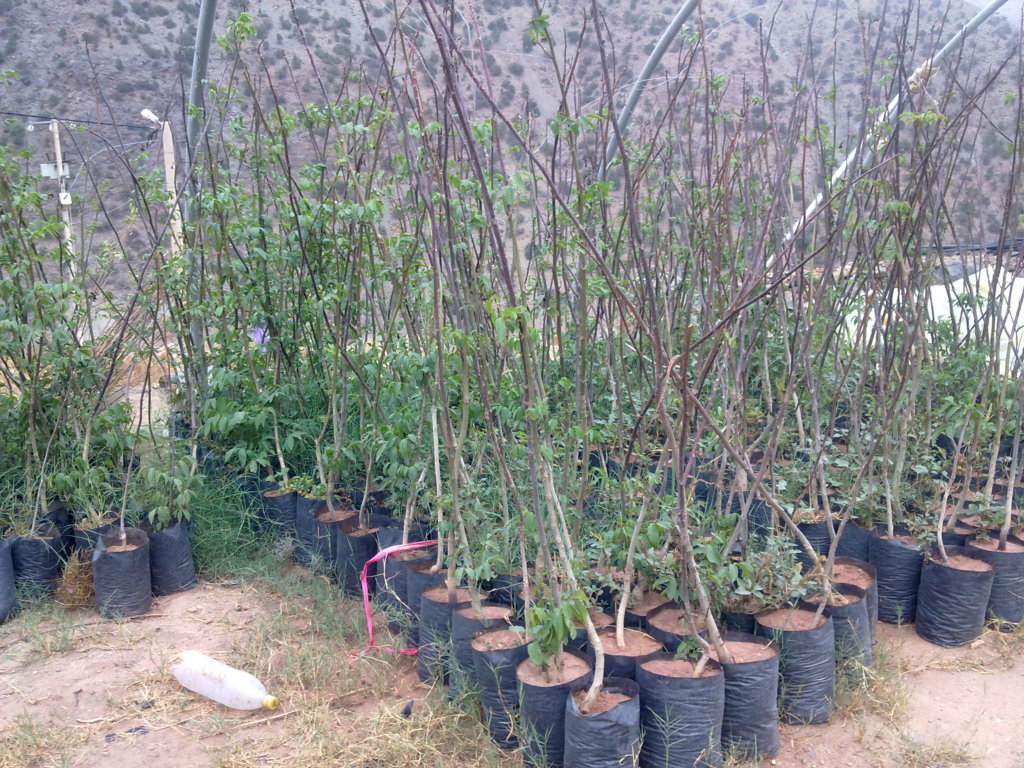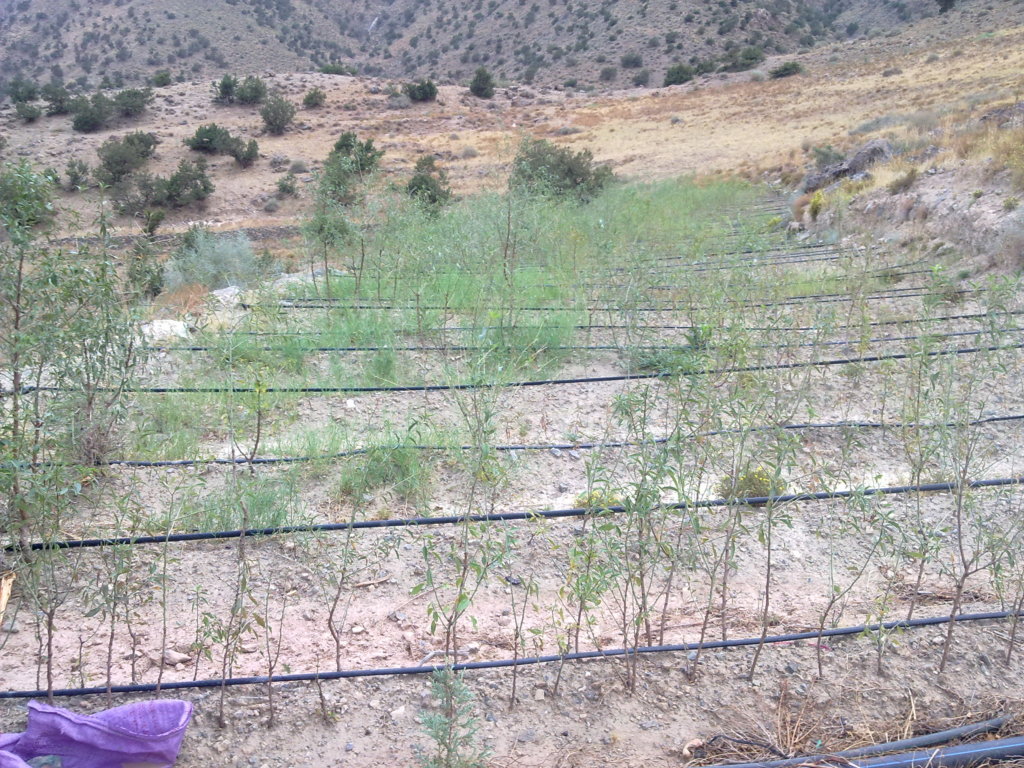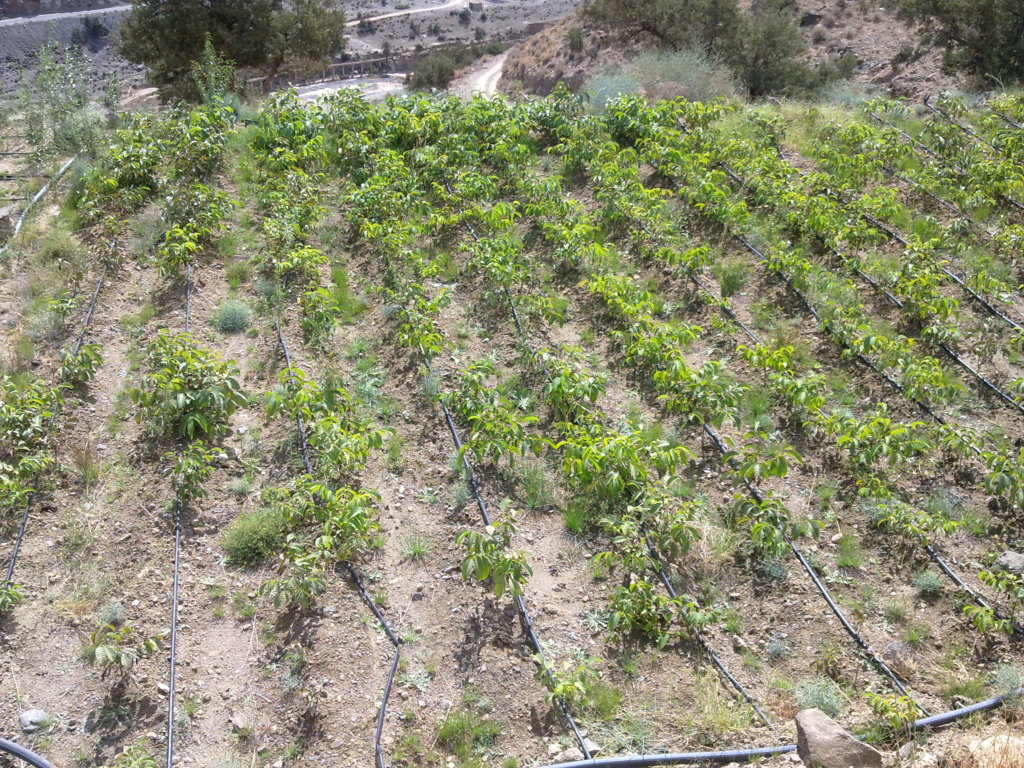By Yossef Ben-Meir | High Atlas Foundation president
Rural small farmers are beset by generational poverty. They make up a third of the country’s population and 80% of the rural households earn less than the national average (World Bank, 2014). The combination of population growth and the low market value of traditional staple crops (corn and barley), from which most rural households derive their income, has made subsistence agriculture unsustainable. These traditional crops are planted on more than 70% of Moroccan agricultural land, yet they account for only 10-15% of agricultural revenue.
The farmers face inconsistent water availability: excess water resulting in flooding that erodes soil and that washes away canals during the winter, and the dry summers that dry up irrigation canals and the result is low production. Some villages have seasonal river water, while others do not. Other communities have a well with insufficient water, and others may be adjacent to a seasonal river fed by mountain snow melt. Most of these villages are in a fragile mountain environment, with soil erosion, deforestation, and damaged vegetation cover.
Traditional flood irrigation is very inefficient on sloped land using water from earthen canals and basins that incur significant loss of water. Communities of the High Atlas Mountains always rank irrigation the top priority (only supplanted by clean drinking water projects – the two project types are can be technically and infrastructurally integrated). The cost of just the materials for irrigation projects, even that communities are always willing to provide labor, make them nearly impossible for the great majority of villages to implement without external support and partnership.
One way to improve the livelihoods of rural farm communities is to implement highly efficient drip irrigation to grow higher value crops. Work by the High Atlas Foundation over many years has shown that incomes can increase by more than 50% by growing tree crops such as olive, pomegranate, and fig. A community orchard adjacent to each village will provide a long-term income source to upgrade and maintain local facilities such as schools, health care, and other local needs.
Achieving a consistent and reliable water supply requires the installation of a groundwater well near the village. Not only will the well allow irrigation with a modern drip irrigation system, it will provide a source of good quality water for domestic use in the village. A model water supply and irrigation system has been designed for an orchard with 5000 trees (8 ha). The optimum location for the project would be adjacent to the village where electrical power is available. In addition, proximity to the village means reduced cost for the domestic water supply portion of the project.
The design is modular in nature and can be adapted and replicated and readily implemented in many villages once a thorough assessment is completed. The cost to construct a system that will typically benefit villagers will be approximately $25,000 USD. This investment will help alleviate poverty, support schooling of village children, and result in positive benefits to the local population for years to come.
- Brian Boman
Farmer-to-Farmer / HAF Volunteer
Project reports on GlobalGiving are posted directly to globalgiving.org by Project Leaders as they are completed, generally every 3-4 months. To protect the integrity of these documents, GlobalGiving does not alter them; therefore you may find some language or formatting issues.
If you donate to this project or have donated to this project, you can receive an email when this project posts a report. You can also subscribe for reports without donating.
Support this important cause by creating a personalized fundraising page.
Start a Fundraiser

